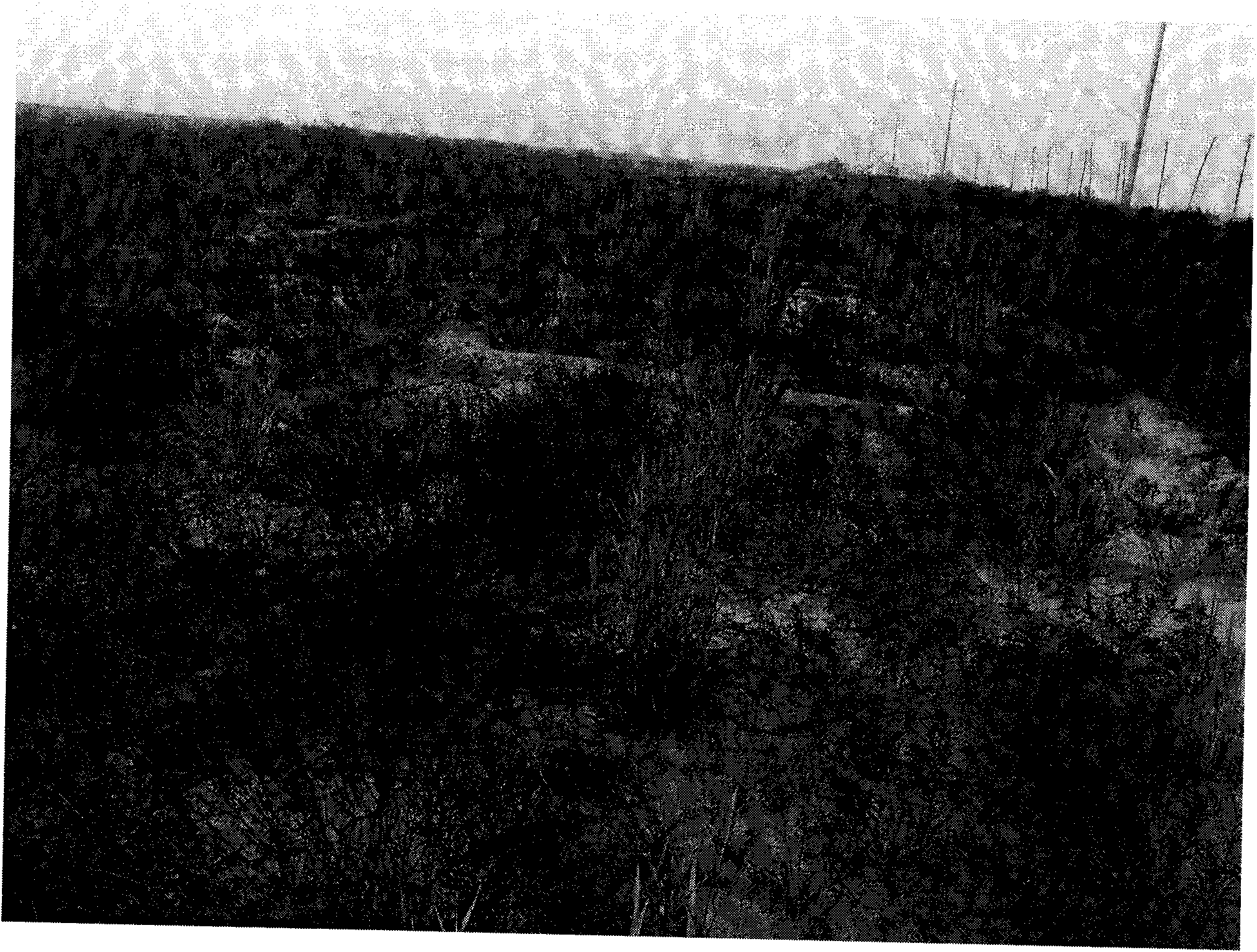Method for improving coastal saline-alkali wetland by papermaking waste
A papermaking waste and saline-alkali technology, which is applied in the fields of land preparation methods, chemical instruments and methods, and applications, can solve the problems of long improvement time, environmental pollution, and large investment, achieve good economic benefits, reduce salt content, and improve The effect of content
- Summary
- Abstract
- Description
- Claims
- Application Information
AI Technical Summary
Problems solved by technology
Method used
Image
Examples
Embodiment 1
[0014] The coastal saline-alkali wetland is improved according to the following steps: in March, the papermaking waste composed of grass powder and sludge is applied to the coastal saline-alkali wetland with the basic properties of soil as shown in Table 1, and the papermaking waste ( grass powder and sludge) and the soil of the coastal saline-alkali wetland are fully mixed to complete the improvement of the coastal saline-alkali wetland. The wetland is a heavily degraded reed wetland, and the reed vegetation coverage (specifically, the base coverage) is 0.
[0015] The application rates of the papermaking waste grass powder and sludge are respectively: in treatment 1, the application rate of grass powder is 500kg / mu, and the application rate of sludge is 500kg / mu; in treatment 2, the application rate of grass powder is 700kg / mu, the application rate of sludge is 1000kg / mu; treatment 3, the application rate of grass powder is 700kg / mu, and the application rate of sludge is 15...
Embodiment 2
[0023] Follow the steps below to improve coastal saline wetlands:
[0024] In March, the papermaking waste grass powder was applied to the coastal saline-alkali wetland whose basic soil properties were shown in Table 3, and the papermaking waste grass powder was fully mixed with the soil of the coastal saline-alkali wetland to complete the process. Describe the improvement of coastal saline-alkali wetlands. The main wetland plants in this wetland test area are reeds, which are moderately degraded reed wetlands, and the reed coverage is 60.3%.
[0025]The application rates of grass powder in the papermaking waste are: 500kg / mu for treatment 1; 800kg / mu for treatment 2; 1500kg / mu for treatment 3. The depth applied to the coastal saline-alkali wetland is 20cm.
[0026] Sampling was carried out in October to determine its main soil physical and chemical properties. Among them, soil soluble salts are measured by gravimetric method, soil organic matter is measured by high tempera...
Embodiment 3
[0034] Follow the steps below to improve coastal saline wetlands:
[0035] In March, the papermaking waste sludge was applied to the coastal saline-alkali wetland whose basic soil properties were shown in Table 5, and the papermaking waste sludge was fully mixed with the soil of the coastal saline-alkali wetland to complete the process. Describe the improvement of coastal saline-alkali wetlands. The wetland is a heavily degraded reed wetland, and the reed vegetation coverage (specifically, the base coverage) is 0.
[0036] The application amount of the sludge is respectively: 1000kg / mu for treatment 1; 1500kg / mu for treatment 2; 2000kg / mu for treatment 3. The depth applied to the coastal saline-alkali wetland is 20cm.
[0037] Sampling was carried out in October to determine its main soil physical and chemical properties. Among them, soil soluble salts are measured by gravimetric method, soil organic matter is measured by high temperature external heat potassium dichromate ...
PUM
 Login to View More
Login to View More Abstract
Description
Claims
Application Information
 Login to View More
Login to View More - R&D Engineer
- R&D Manager
- IP Professional
- Industry Leading Data Capabilities
- Powerful AI technology
- Patent DNA Extraction
Browse by: Latest US Patents, China's latest patents, Technical Efficacy Thesaurus, Application Domain, Technology Topic, Popular Technical Reports.
© 2024 PatSnap. All rights reserved.Legal|Privacy policy|Modern Slavery Act Transparency Statement|Sitemap|About US| Contact US: help@patsnap.com










